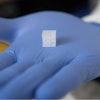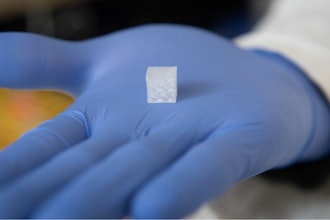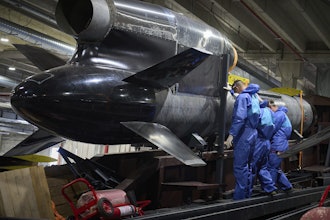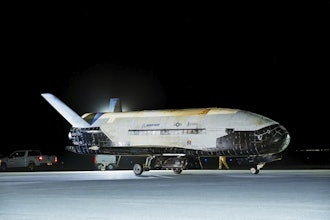Drones can't seem to keep out of trouble -- well at least a few problematic pilots. Late last year, Gatwick Airport in Britain was shut down for nearly two days after unidentified drones were seen flying over the airfield, and in October 2017 an Army helicopter hit a drone in mid-air.
Some sophisticated solutions have come online, like Battelle's DroneDefender which takes drones down with a point-and-shoot system that attacks the radio control frequency. Other tactics in the market rely on deploying a net from another drone to ensnare the unidentified flying object.
Now researchers from the U.S. Army have patented a new 40mm grenade that can take down drones after being fired from anything from smaller, handheld M320 grenade launchers to the larger Mk-19 launcher.
As you can see from the illustration, the net is housed under a proximity sensor that detonates a small charge which blows the warhead apart and throws the net about six to nine meters from the target.
The new invention was patented last week (US Patent 10,197,365) and came with a bit of fanfare because it brings a little innovation to grenade launchers that, like the Mk-19, have been around since 1966. The grenades don't look much different from standard 40mm munition used with the M203 and M320 launchers.
One of the biggest benefits of the 40mm grenade launcher platform it that it has been used by foreign and domestic forces for several decades, so there won’t be a steep learning curve or additional equipment.
The new warhead was invented by the Armament Research, Development, and Engineering Center at the Picatinny Arsenal in New Jersey. In initial tests, it has proven more effective than other counter-measures like the aforementioned net-deploying drone. While net grenades might be less exciting, they are also more cost-effective than shooting drones down with shoulder-fired missiles.
Brian Metzger, senior technology manager at TechLink told IEN that “the Army’s net grenade [isn’t] completely destructive, which is important if you want to examine the target drone forensically after you’ve brought it down.”
TechLink manages technology transfer for the Department of Defense. Metzger told IEN that “now that the Army’s patented it, [TechLink is] preparing to navigate U.S. businesses through licensing, which gives them the rights to manufacture it for domestic non-military and qualified foreign customers.”






















